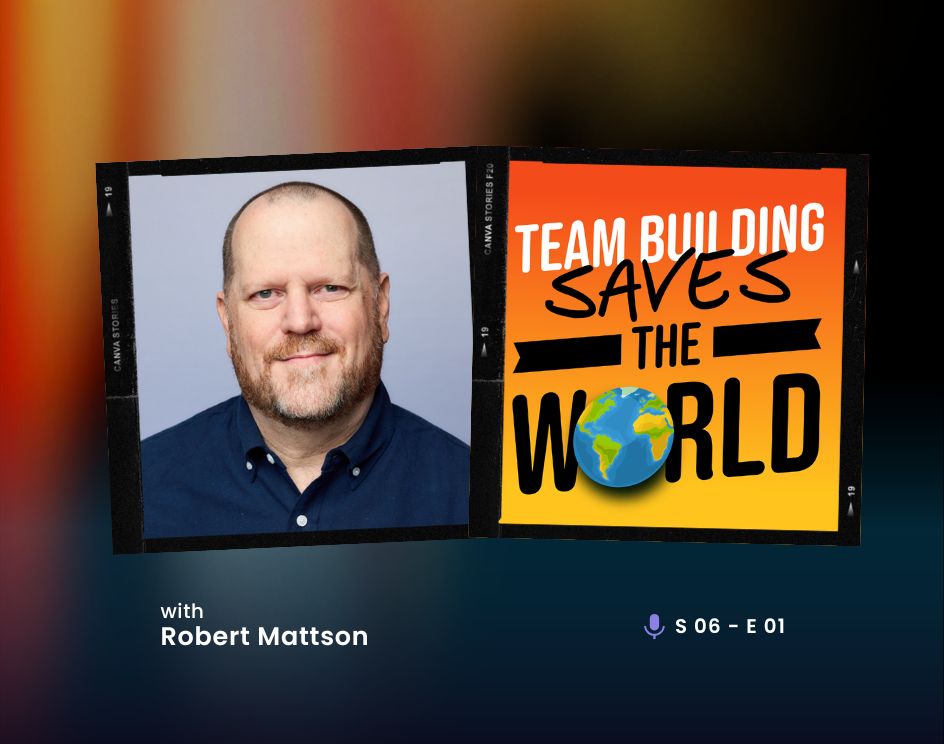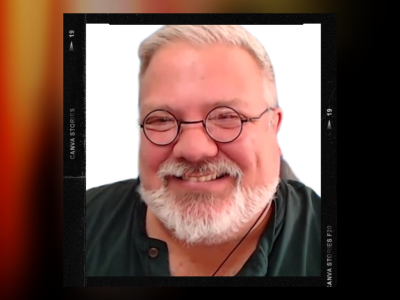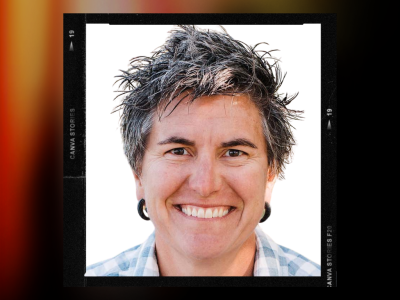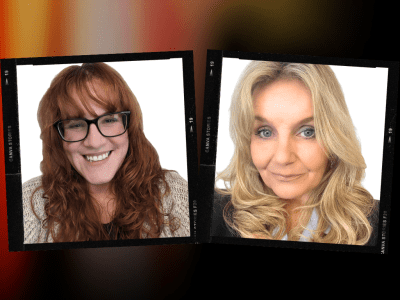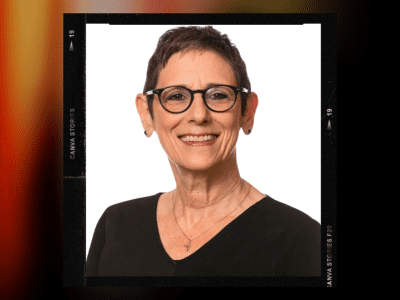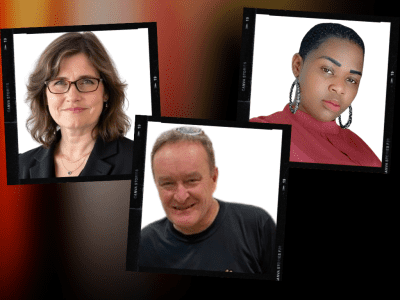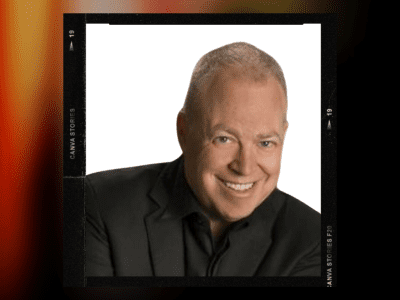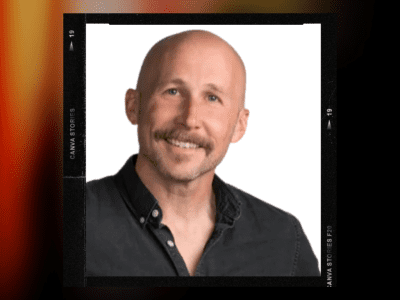The Strategic Art of Business Storytelling
w/ Robert Mattson
Use the buttons above to listen now.
Transcript - The Strategic Art of Business Storytelling
Rich: On this episode of Team Building Saves the World. So we both have great memories and a and a few scars. What do you think? What story is this telling?
Robert: Okay. Exactly. And you nailed it. What story is it telling? And he looked at me, he said, you showed me I didn’t have to be afraid anymore.
Rich: Wow.
Robert: Oh my goodness.
Rich: And what a fantastic gotcha moment.
Robert: The more you, you give the audience, you know this, right? The more you you give them, the more they will connect with you.
Rich: Hello, team. It’s me, your old friend, Rich Reinland, host of team building saves the world and welcome to season six of the podcast. In this episode, we have the pleasure of meeting Robert Mattson.
He’s an author, playwright, actor, singer songwriter, marketing exec, engineer, photographer, and founder of Intrigue Communications and Coaching. But before we do, I have to share some love with all of my supporters at TeamBonding. If your team is ready to experience teamwork through the Power of Play, the visit TeamBonding.com to learn more.
Now, team, let’s learn more about storytelling and decision making with my guests. Author of the recently released The Salesperson’s Guide to Storytelling, and a man with which I have a surprising amount in common, Robert Mattson. Robert, hi, how are you man? Thanks so much for coming on.
Robert: Well, thanks. It’s great to be here.
Rich: So Robert Mattson, just so my team out there gets to know you a little bit better, you have been an actor since you were 15 years old. Is that correct?
Robert: Walking down the hall in high school, saw a poster for auditions for A Funny Thing Happen on the way to the forum, turned to my two buddies and said, guess what we’re doing this afternoon.
Rich: What a great first show to do. Oh my God. Way to jump in, man. Nice. So we have something in common though. You and me, we both, we both have worked for Mystery Cafe.
Robert: So we both have great memories and a and a few scars.
Rich: Correct. On both points. Yeah. Nicely said. How did you join up with Mr. Cafe and when were you in Mystery Cafe? Because like, I, I never worked with you personally.
Robert: That was a long time ago. So I was I was pretty fresh outta college. And a buddy of mine was playing the king in a show called His Majesty’s Feast that David had started up.
Rich: Oh, okay.
Robert: And he said, you should understudy. I was like, I mean, I get paid to act. I never got paid to act. And so I said, sure. And so, I understudy for the jester in both the knight, but the first time I actually got on stage, it was for the mystery cafe, and that’s playing Jack in Killing Mr. Withers.
Rich: Wow. That was a long, long time ago.
Robert: I had to jump in for that. And then the first time I got on stage for his majesty’s feast was playing the king, which was my friend’s part. And I was flying back from Europe on a vacation and I was going over the script. I go, wait a minute. We haven’t talked about costume. My friend Jake, sadly departed dear friend Jake was six, four and a half, about 400 pounds.
Rich: Hmm.
Robert: I am not. And so please let them have a costume that’ll fit or else this is gonna be a big comedy.
Rich: So here’s the important thing. And somewhere out there, I know right now my mother is listening to this episode. Or that’s what she, or she’s watching the video of it. Either way. So she’s going to, I’m gonna ask you the question. She once asked, how did you go from becoming an actor to a successful business person? Because I’ve never managed that.
Robert: It’s actually the other way around. I have an electrical engineering degree. My last corporate job, I was a VP of marketing, so there’s some weird stuff going on there. But the thing is I was working full-time as an engineer while I was acting, which means that I picked up the tab for all my actor friends who were not.
And I just kept on doing that, but I did find something interesting when I moved from engineering to more sales. I was a sales engineer, so I was a demo guy. The more I did Mystery Cafe in mass hysteria, the better, I was at my day job. Because I could improv. I, I saw people in a different light.
I could do better customer service. I could see things from their point of view, because, when people are seating and you’re like, I ordered the beef, not the chicken. Oh, we don’t have that. Or we brought two new friends and we have no room for them. Oh, we’ll figure it out.
You start to be more, I think, organized, reactionary.
Rich: Okay.
Robert: So I found that that was, for me, the more I act, the better I am at being a corporate person.
Rich: Which leads us to what our topic really is today. Not just two actors sitting around talking about our old war wounds, but talking about storytelling and how it enhances leadership. So how did you get from doing basically what I do now, sorry, mom to creating your own business with intrigue, communications, and coaching?
Robert: So the lifespan of a head of marketing in the world of high tech, or in business in general is about 18 months. That’s pretty much the longevity you can expect. And I was working for a company, I’d been there about eight months and I’d finished up someone else’s half year and just a small software company, and I was doing the first two months of my own year and things were going fine in marketing, but things were not going fine in sales.
Rich: Ah.
Robert: And the CEO, I went in for my one-on-one. He says, this is killing me, but I gotta let you go. I had turned from strategic leader to overpriced overhead.
Rich: Oh geez.
Robert: But about about a month later, his wife, who had already gotten pushed outta the company about a month before me.
Rich: Oh, well, okay. At least he’s getting rid of his family first.
Robert: Yeah, well there, there’s, there’s more drama there, but we don’t need to talk about drama.
Rich: Sure.
Robert: He called me and said, Hey, my sister has a company and she has this person that needs some help presentation wise. I know you’ve done a lot of coaching as part of what you do as a marketing guy. I said, yeah, I had time at the time. I said, sure, but it would probably be better if I did a little class. So she called me back an hour later and says, can you do an four people in Boston? I’m like, yeah, sure. Then three days later she called me back.
There’s so much interest. Can you do 25 people in Philadelphia? And it’s like, wait a minute. I can’t coach 25 people. I have to put together a curriculum.
Rich: Right.
Robert: I took everything that I had done, not being paid for it ’cause it was just something I did as part of my corporate gig as coaching people, you know, CEOs, chief marketing officers, salespeople, whatever. And I put it together in a curriculum and I sent it to them and I realized it was a Saturday morning and I said, wait a minute. If I got this information, I’d wanna look at the company who’s giving the class. That means I need a website. That means I need a URL, I need a logo. Three and a half hours later, it was all in place. Thank you. Modern technology.
Rich: Excellent.
Robert: And so I went to Philadelphia and everyone did a little opening presentation. And this guy, Christopher did one, and he was a director of marketing, really well-spoken guy. Beautiful slides. And he had about an eight minute presentation. And halfway through he just stopped. And he says, I have to stop now. Okay, Christopher, that’s fine. And so we went through the class, I came back and I gave everyone feedback, they came back in small groups. I said, either redo what you did based on what you learned or do something new. Christopher did a 10 minute talk that could have been a keynote at a creativity conference.
He told a story about Tom Waits and the woman who wrote Eat Pray Love, he commanded the room. He used expansive gestures. At the end, I said, Christopher, what happened? And he looked at me, he said, you showed me I didn’t have to be afraid anymore.
Rich: Wow.
Robert: Oh my goodness.
Rich: And what a fantastic gotcha moment. That’s great.
Robert: And at that moment, even though I was terrified to start a business and go out on my own, I said, I have to. And that was the beginning of nearly seven years ago, and it’s been going, you know, even with a pandemic, it’s been going pretty well ever since.
Rich: Yeah, yeah. Yeah. I was gonna say, how did you, how did you decide to pivot when the world changed?
Robert: Well, the difference was, is that all my live workshops obviously went away. Sure. I started to do things more virtually, and being a guy with an electrical engineering degree, I tend to be, well, I jokingly refer to myself as a long-term dilettante. I spent about 10 or 15 years learning about different stuff, but I’m always technically focused, so I started building out how I could teach a workshop from my home office.
Rich: Mm-hmm.
Robert: Right now I’ve got, I can look at seven or eight different screens in my office. I’ve got two cameras including a virtual whiteboard. Yeah, I’ve got multiple microphones. And once I started doing that, people said, how do you do it? And I started doing what I call home office triage sessions. So all these people who are now on Zoom for the first time didn’t know how to look professional or sound professional. Like you’ve got an audio tactical mic looks like an at two 20 or 2 20 35 maybe in front of you.
Rich: Okay.
Robert: And I started saying, this is how you light a space. This is how you use a webcam properly, or go above and beyond. I started doing that work and then I started doing virtual trainings and that lasted until I could get out and talk to people again.
Rich: Your background there that I see, is that actually your background? Is that your room covered in microphones and cameras or is that…?
Robert: Oh yeah. I don’t believe in virtual backgrounds.
Rich: Good. Because I was wondering, ’cause this, I don’t know, we’re trying something new this year ’cause used, it used to be we’re for season one through five, we just had me with the name of the podcast. But now we’re trying to look a little bit more casual. What do you think, what story is this telling?
Robert: Okay. Exactly. And you nailed it. What story is it telling? I don’t like virtual backgrounds for a few reasons. One, people tend to, their hands disappear, their hair disappear, people with big hair. And I don’t learn anything about them. I wanna see a well curated background that will engender a conversation. Because I can do multiple views here. So I can do this view here.
Rich: Nice.
Robert: And you can see things in my background. And this is what I call my show off view. When I’m trying to sell a deal, I definitely do this. ’cause if I don’t look better than people, why should they hire me?
Rich: There you go. Nicely done. But okay, let’s, let’s talk about storytelling a business. What made you focus on that? I mean, I love the story of the guy, you were training but, how do you take that, the next step? How do you make that the driving force of what it is that you do?
Robert: It might sound like a cop out. It’s ’cause you have to . We are wired to learn by source.
Rich: Okay. How do you mean?
Robert: Oh, well, I mean, first it draws us together ’cause when you go out with friends on a Saturday night, what do you do? You tell stories. But that’s where people usually end. And I have been sold to and sold with partners my entire life. And people come in and they would tell me stories to get to know me, and they’re like, great. And then they would go into their business spiel and there would be no stories, and I felt like I lost a connection with them.
And also it’s an encapsulation of information. Stories are 22 times more memorable than features, facts, and functions alone. And I tell people, you don’t wanna win the hour you’re talking to someone. You wanna win the five minutes after you leave the room.
Rich: Mm.
Robert: Are they talking about the things you want them to talk about?
Nice stories help you. Remember if I asked you right now to recite Goldilocks and the Three Bears or Snow White, even though you haven’t thought about ’em in years you could do that. And also there are great stories that we all share, but the thing is that people have to say it’s not just about connection. What can I teach using a story structure?
Rich: Yeah.
Robert: How can I leverage that memorability and that intrigue, which is why I named the company intrigue, how can I intrigue people to capture their attention? There’s a company called the Rain Group, and they actually have a thing. It’s, I always give credit where credits due, they call it the 33 rule.
You have to grab people’s attention and the first 30 seconds, and then you have to reengage every three minutes.
Rich: Okay?
Robert: That means you have to create change. How do you do that? Well, stories is a great way to connect to people and create something interesting.
Rich: Why? Because there are gonna be people who are still like, okay, I can tell stories, that’s fine, but why does it work?
Robert: Let’s look at it this way. If you and I were going in and selling a service to a company and working from competing organizations, but we’re trying to solve the same problem . If you walk in and you start with, hi, I’m from TeamBonding. We were founded in this year. We’ve done this. We have so many locations, we’ve served so many people.
And then the next person comes in and says, hi, I’m from XYZ company. We were founded in this year. We’ve served this many people. You sound the same and attention dips in the middle of a meeting. Okay? It’s high at the beginning, high at the end, and it dips at the beginning. And when you get to the interesting stuff at the middle, that’s when their attention is at its lowest dip.
Rich: Hmm.
Robert: But if you walk in and instead of doing that, you walk in and you teach them something that gives them value immediately.
Rich: Okay.
Robert: It captures their attention. Also makes you sound unlike other people. I tell people the three key words that really encapsulize a great communicator are selfish, lazy, and smug.
Rich: I’m all three!
Robert: It’s not that you have to be, it’s, you have to assume that your audience is a little bit of each.
Rich: Okay.
Robert: They’re selfish ’cause they want something out of it. They’re investing their time and attention. They don’t care about you. They don’t even know you most likely. Right? How can you meet their selfish quickly to say, wow, this person’s bringing value?
Then they’re lazy because no one wants to do a bunch of math. Just tell me what is important. And every time I’ve been in a big high tech meeting and I hear some salesperson say, I know this slide is a bit of an eye chart, then why are you showing it to me? What you’re doing is you’re asking me to ignore you.
I’ll read this. I’ll try to figure something out while you’re talking and I won’t pay attention at all. People use slides. Slides are tools and they’re also crutches. Think of a slide, and as a theater person, I think you’ll appreciate this, the slide is a backdrop on a Broadway show, right?
Rich: Right.
Robert: It sets the scene and then you forget it and you watch the star. So, lazy, simplify, elevate. Elevate your story. Make sure you’re getting the most important parts of the narrative. Then smug, especially in sales, when you walk in and you’re trying to tell someone, you should buy this, you should change your business and do something this way?
What they’re looking at is they’re saying, you don’t own my business. You’re a salesperson. You are. You are looking at me like a wallet with legs and I tell salespeople, I’m gonna give you a new title: you’re no longer a salesperson, you’re an industry analyst with a quota.
These people talk to all these different companies. They have knowledge that this person in front of them would kill to have.
Yeah. Yeah.
And their chances to go in there and say, no, I will show you that I am Gandalf. I have great mysteries that I can bring to the Shire and teach you.
Rich: Okay, then all this sounds great.
Robert: But the danger of it seems to be the oversharing. How do you know what you’ve said is enough to get them involved, but not so much that they’re gonna grow bored?
Rich: Yeah.
Robert: Detail versus brevity. Yeah, that’s the big balance, and that’s one of the big things when we do workshops, we do detail versus brevity. Okay? How much detail can you put in to make them feel like you’re telling a real story?
Something that they can visualize in their head, because visualizing is the key to most stories. If you can picture it in your head or you can see it in front of you. That gives you an edge. That’s why props are great. Drawings are great. Gesture sets are phenomenal. They’re all wonderful. But you wanna make sure that you don’t put too much in.
So if I was saying, I was gonna introduce a story about someone I’d met that I was pitching, and I would say my friend, I was talking to John, he’s the Chief Revenue Officer of a company. John’s a phenomenal guy. He works outta Chicago… big Cubs fan. You go into his office and there’s Cubs logos everywhere.
Rich: Okay.
Robert: That took 15 seconds. But now I’ve defined John as a real human being versus saying, I worked with XYZ company.
Rich: Mm-hmm.
Robert: It’s not real. The key is to know your structure and the three x structure: intro, conflict resolution, right? Know your intro, make it clean and crisp and intriguing. Get to your persuasion. And then get to your close. Close is something that they’re gonna remember because they remember the most at the end. Either overcome an objection or reinforce a strength at the end. And here’s a pro tip: a lot of meetings end with “any questions?”, right? And I tell people, no, never do that again! Because what if you ask, answer that last question poorly.
Rich: Yeah. Yeah, yeah, yeah.
Robert: That’s what they remember. So, questions near the end? Awesome. Questions at the end? No, always save time for, “oh, one last thing”. And share that one thing that you want them to remember as they walk out the door.
Rich: Or there’s always the dreaded, “any last questions?” And no one has one.
Robert: Oh yes.
Rich: And then you’re just standing there staring at each other.
Robert: Silence is dangerous.
Rich: Now, how much of this is the story of you as the storyteller versus the story of the product or the market or the company that you’re promoting?
Robert: That depends. It depends on what hurdle you’re trying to get people over. If you think of the convincing cycle, there’s, think of the, the stages of change which is convince someone has to admit they have a problem and then they have to say, okay, I’m willing to do something about it. They have to make a plan and then they go into maintenance.
You see it in everything from Alcoholics Anonymous to any kind of change management process. You have to figure out where someone is and what hurdle you’re trying to get them over and who they are. So if I go in and I just tell my origin story like that I shared with you, right? Is that gonna give them value?
It’s gonna get these people, these people over the hurdle that they need to get ’em over. I need to look in the room and say, who is the most important person in the room? Where are they in their thought process? And what hurdle am I trying to get them over? Then I go back to my shelf of stories and I pick the appropriate one that will get them over the hurdle.
The biggest challenge is that people tend to suffer from what I call the curse of knowledge.
Rich: Okay.
Robert: We know what we do.
Rich: Yeah.
Robert: I do. A lot of smart people who know their stuff inside now, and a lot of ’em are founders. They built companies and products from the ground up and they love to talk about ’em. They don’t care.
Don’t talk about your product. Talk about what you do affects the people you’re talking to. How do you make their life better?
Rich: Right.
Robert: So get to the point of, “how do I make this person’s life better in this moment?” And then you pick the right story for it.
Rich: And I love that you mentioned that because it brings me back to my improv days where being in front of an audience with a group of people.
One of the, I’m going to give away a secret now that I probably shouldn’t, but people need to know that improv, good improv teams, have been doing the same bits over and over and over, and they’ve just been perfecting them
Robert: Oh, yeah.
Rich: As they’ve gone along. So we always know when it’s the, you know, scenes from hat or whatever else, game you, whatever your team might call it.
Robert: Yeah.
Rich: We always have the zingers and we always have winners that we know will hit. So you’re, you’re recommending that when you’re building these stories, find the ones that work and just hold onto them in the background for yourself?
Robert: Of course, that’s exactly what you need to do. Because the key to improv, you’re right, is picking the right thing you have in your back pocket.
Rich: Yeah. Yep.
Robert: And that’s exactly what you’re doing. What is a sales call or what is an investor meeting or what is a CEO talking to their employees except improv? It’s, “I know my script. I know what I’m gonna talk about, but I know things are gonna go wrong and people are gonna ask questions.”
I’m not ready for, I have to have a bunch of stuff prepped in my back pocket that I can haul out so it looks like I am so smooth.
Rich: Alright, but let’s talk about the audience again. You are quoted as saying 95% of decisions happen in the unconscious mind. What does that mean and how do we influence that 95%?
Robert: Okay. That I quote that, but that’s Dr. Gerald Altman from Harvard. Okay. Who did the, now that’s the old saying people buy, and by the way, we’re all selling whether we’re selling products or ideas or viewpoints or even ourselves in the case of actors. So Dr. Gerald Altman quantify the old saying, people buy emotionally and justify with facts.
He actually did a study that did that 95% and he figured that out. And I can give you another proof point.
In 2022, there were 160,000 minivans sold in the US. There were 6 million SUVs. Is that because minivans don’t do the job as well as SUVs? No. In fact, oftentimes they do the job a heck of a lot better than SUVs.
Rich: Yeah.
Robert: The thing is that people, emotionally, don’t want to be a minivan person. No offense to any minivan people listening. They’re incredibly efficient. You are above this emotional ploy, but a lot of people are like, no, I want to be the SUV person ’cause that’s “cooler”. And that’s why 6 million, 160,000.
So we all justify, I mean, I do a thing where I talk about turning a want into a need, and I use the example of buying a camera. And the camera was my eighth camera body. Begs the question, Rob, why’d you need an eighth camera body? Well, the old joke is, how many cameras does a camera person need?
Just one more. But the thing is that even though I did all the research on it, and I knew all the YouTube videos and the reviews and all that, and I knew all the specs, I didn’t buy it until I started telling myself stories about how other cameras had let me down. And the pain I felt and how the auto focus didn’t work well here, or oh my goodness, there was a 30 minute time limit on this particular camera and this new camera didn’t have any of that.
So I started to get emotional about it. And yeah, $3,500 later I have a new camera.
Rich: Nice.
Robert: And a dented relationship, but that’s another issue.
Rich: Okay. Let’s switch topics a little bit because you come from a tech background. So what is the intersection between the two? How does technology assist with storytelling and how does storytelling assist with technology?
Robert: Okay. Two very different questions, so I’ll address ’em one at a time. Let’s start with how storytelling assists technology.
Rich: Great.
Robert: So technology is incredibly complex and there is the Nerdom, the Geekdom, which I am a proud member of. We will want to talk about how things work and why things work. I will talk about my office setup for hours on end and why I picked one mic versus another, and why a condenser’s better than a dynamic, and I will talk about all the time.
Rich: Sure.
Robert: The thing is that stories can help us encapsulate and raise things up to a human level. If I hit you with a wall of specs, then that’s not gonna help you, especially if you have no interest in a wall of specs.
Rich: Or not that background. So I don’t even know what you, what they, what the numbers mean.
Robert: Yeah. What is the end game? What is the human element? What does this microphone enable me to do? What does that, my last example, what does that camera enable me to do? Right? It enables me not to be frustrated or scared when I’m on site shooting a Harvard professor?
When I was doing a video of a Harvard professor, it gives me peace of mind and I have to look at the particular thing that I wanna hang my hat on. And whenever I talk to high tech companies, I ask that. What is your unique view of the world? What do you want to hang your head on? ’cause you’re solving the same problem as other vendors.
Rich: Mm-hmm.
Robert: They’re gonna look at your features through the lens of that problem. If you have features that aren’t in that lens, they don’t care about them.
Rich: Okay.
Robert: But if there is something they don’t realize is important that you can teach them, that leads to you. And that’s a big thing. Leading to you not leading with you.
Rich: Hmm.
Robert: So instead of talking about your features, facts, and functions, lead with a story about how, one maybe it’s not even about your product. Maybe it’s about a bakery ’cause you’re trying to teach ’em a higher level concept that adding one piece of gear will increase your business.
Rich: Right.
Robert: And if I tell ’em a story about my piece of gear they’ll start thinking about, wait a minute, if I’m gonna put that in my business, that means I’ve got to get budget, stop production, talk to these people to get, you know, to all these people that don’t want me to do that. I leave them right next to their objections.
But if I tell ’em a story about a bakery, they’re nodding at the concept first, then I have one nod in my pocket. And if you start nodding, it’s harder to stop nodding. So when it comes to tech, it’s elevating, simplifying, and making technology human.
Rich: Hmm.
Robert: Technology helps storytelling on the other hand, that is, it should be invisible. Or at least not noticeable. I do a lot of stuff in my office so I can switch to a 22 inch screen right now through a video switcher. So I can do this right now and go picture and picture and I can go up here and I can start drawing things. There’s technology enabling me to keep your attention by doing this drawing. And I can use another thing that select everything and delete because I’ve already programmed something to do that. So technology is helping that but it should not be front and center. I mean, sure and there might be a little “Oh wow!” Moment. But what it’s doing, it’s enabling me to activate parts of your brain.
Because the visual aspect of your brain, that is something that most people react to,
Rich: right?
Robert: It also creates change. Anytime I can create change, it’s a good thing. So if I put a PowerPoint on the screen, even if I have my little picture in picture there that Zoom or other platforms do , you’re mostly looking at a PowerPoint. And it gets pretty dry. Here’s a another little pro tip: for anyone who’s listening to this, if you have a beautiful slide that marketing put together and you use it in front of somebody? You don’t get credit for it. The better looking it is, the more they think someone designed that for you.
But if you get up on a whiteboard and you start drawing, there is no doubt where that knowledge is.
Rich: Hmm.
Robert: It comes from you. You build your credibility. You go from a person who can read a slide to someone who has innate knowledge on a topic.
Rich: Okay.
Robert: So using the technology to create change, to keep people’s interest, to make things look a little flashier. There’s nothing wrong with a little flash, but it has to serve the story.
Rich: Okay.
Robert: I’m sure that everyone here has seen a movie and said, “oh, wow, all those cuts they did distracted me from the story”. Don’t distract.
Rich: How do you keep it then, from becoming the crutch that you don’t want it to be? Sometimes the technology becomes the star. And how do we keep that from happening?
Robert: Well, there’s for me and then there’s for others.
Rich: Go man. Go tell me both.
Robert: I got a lot of technology. So I’ve got a lot of choices and it’s kinda like going to the California Pizza Kitchen where they have a menu that’s about two and a half inches thick.
You know, it’s like, what? What do I choose? What do I choose? What do I choose? The thing is always look at it from the story point of view and from the point of view of the viewer.
Rich: Okay.
Robert: Am I trying to give them a break from what I’m doing? Think about that 33 rule. Has it been three minutes since I changed something?
Now, change could be a visual, it could be a topic, it could be a motion. It could be my tone. So, as we’re both actors, this is one thing I teach business people. Your voice is one of your most powerful tools.
Rich: Right.
Robert: And use it to break things up. Every presentation is a conversation. They’re just answering quietly.
Rich: Hmm.
Robert: But you have to give them a moment to answer in their head. So if I am talking about a very important moment or a very important concept, I will take a pause after I say it to give them a moment to reflect.
Rich: You gotta have, you gotta have layers.
Robert: Yeah, exactly. So the thing is, use the tools you have, but always think of it as what is the audience seeing, and am I keeping them interested versus just doing that inside out thing?
Here’s my story!
Rich: Yeah, yeah, yeah.
Robert: If they’re not interacting, you’re probably putting ’em to sleep.
Rich: In the years of my directing, I’ve always tried to tell people, you’re building a cake. No matter what the scene is you’re in, you’re building a cake. You can’t just have icing. There’s gotta be something in the middle too.
So what kind of new tools are you talking about now? Like what’s the latest thing that people are using?
Robert: Well, there’s been, since the pandemic, there’s been a big increase in the tools that you have virtually. So things like, I mean, screen sharing, everyone’s used to that. Whiteboarding, it’s usually done pretty poorly.
That’s why I, whenever I do a talk, I have to tell people I’m not using the tools on Google Meet or Teams or Zoom or anything like that. We’re video switching, but I have to also tell ’em that means we have to do things like spotlight me on I think it’s the teams call.
Rich: Yeah.
Robert: So I become the most dominant thing in the screen because they expect you to use it at its bare minimum and I will not do that. The thing is to utilize the technology that you have in the platforms, but also find other things. So if I, right now I’m talking to you and I’m looking into a teleprompter.
So I’m looking you right in the eye. I’ve got a 10 inch screen that’s on a teleprompter that is matched to a 24 inch screen over here. That, and I’m also looking at you through a Sony 6,700 camera with a decent lens on it. That’s why I have a pretty good looking picture.
Rich: Right.
Robert: And I’m also using a lut, I feel like I’m doing a sponsor video. I’m doing, I’m using a four four 40 pure condenser microphone on a boom arm through an audio interface. So I should sound pretty decent.
Rich: Yeah.
Robert: And the thing is that sound is more important than video. So here’s one thing I recommend to people.
If you’ve got a webcam, especially on a pc, Mac webcams are a little bit better, go buy a webcam. Go buy a decent webcam, buy a $60 USB mic, put it in front of you because people will get tired of your voice if it sounds bad, and they will shut down.
Rich: Yeah, yeah, absolutely right.
Robert: That’s the type of technology that I like to see.
I know AI is all the, people say, oh, create something in ai. Never use AI for a finished product, in my opinion. At least not currently. Research? Great. You wanna use it from research? Fantastic. I’ve seen PE clients give me something saying, here’s our story that we wrote. The AI did it. We gave it all the information, and it wrote it.
I’m like, great. It sounds like an AI built it.
Rich: Yeah.
Robert: No personality. People want to connect with people. The more you, you give the audience, you know this, the more you you give them, the more they will connect with you.
Rich: I won’t fault AI as a tool. Like if you wanna, if you wanna look for points to bring up or you know, themes to use. It’s a fine tool to give you a building block.
Robert: Yeah.
Rich: It is not the end all, be all yet. And thank God! Hopefully it will never be. I want everyone to realize that this, you and me sitting and talking to each other is so much better than two computers that 15 minutes ago came up with a script.
Robert: Firmly agree. For my own life expectancy and job. And job teaching.
Rich: Yes brother. You and me both. Alright. How do we wrap this up, man? I mean, what would you tell to people out there who want to… they like what you’re hear, they like what they’re hearing, they like what you’re saying, but they haven’t hit the switch yet to call you up or to go to your webpage or whatever it happens to be nowadays? I know, who calls? I’m such a boomer, but how, how do we get them to understand that this is a necessity that they require? What does this do for their end all be all?
Robert: There are many factors of that, and if I’m trying to prove to somebody that storytelling is important, just go on YouTube. Look at a TED Talk.
Rich: Yeah, right.
Robert: Think about the events you’ve been to where the speaker was phenomenal. And say, what did they do that’s different than what I do? And why did they affect me personally? Why did I walk out of the room feeling changed? It’s because they use these techniques and tools.
Go to a moth night, go to a storytelling night, go… improv’s great. I think improv is great to learn how to improv. If you see see people do short form, great storytelling, find a moth night in your area.
Rich: Nice.
Robert: And just check that out. And then there’s, I mean, I’ve got a book out. There are a lot of books out there. Read a book! There are a lot of good books on storytelling and they have a lot of hints, and I’m sure my book’s a little bit different, but I’m sure that everyone else’s book has a lot of tidbits that I didn’t think of. So go find something and just spend a little time with a concept.
Rich: Just for anybody out there who may not know, what is Moth night?
Robert: A Moth night is a organized storytelling night in cities. It’s also, you can find it on national public radio. Yeah, they’ll do moth nights.
Rich: I love those.
Robert: Yeah, they’re great. And people come up and they’ll tell stories and you will be, you will laugh, you will cry, you’ll be moved. They are phenomenal and you’ll, it’s like an open mic for storytellers. You’ll find some that are okay. You’ll find some that are probably not bad because they do… it takes a while to get up to the moth night, but you’ll find some that will absolutely change your viewpoint.
Rich: And you wrote a book?
Robert: Yes, I did.
Rich: The book is called The Salesperson’s Guide to Storytelling?
Robert: yes, it is.
Rich: When did you do that and how can people find it?
Robert: It got released about a month ago. It is on Amazon, so you can just search for Salesperson’s Guide to Storytelling or Robert Mattson. And that will bring you to the book.
It is basically my two day workshop condensed into a book, into 10 chapters. With a lot of little pro tips and example exercises, and a whole bunch of examples too, of great stories that I’ve heard over time.
Rich: Fantastic. And so 10 chapters, your two day workshop is now two days of reading.
Robert: No, it’s two days of getting people on their feet.
Rich: Okay, good.
Robert: As something that TeamBonding knows a lot about, it’s about what they do. You put together the framework, you teach them some concepts and they go forth and they find their own path through it to improve themselves as human beings.
Rich: Fantastic. Robert, thank you so much, man. I’ve had a great time talking to you today. Thank you so much for coming on board. Where can my team find out more about you besides the book? Like where can they go and find you?
Robert: You can find me at the website, which is intrigue.cc, not.com, cc for intrigue, communications and coaching, and also an island chain in the Pacific. Nevermind. And you can also find me on LinkedIn. I try to post at least twice a week and post ideas and concepts and stories that I think will help and the ones that I think are the most valuable are the ones that get the least attention. So if anyone can jump in and gimme a reaction, that’d be awesome.
Rich: Fantastic. And did you, did you enjoy yourself? Did you have a good time?
Robert: I had a fantastic time.
Rich: Me too, man. Thank you so much. I hope you don’t mind though, before we go, there is one last thing I do have to do with you. It’s time for my speed round.
Robert: All right, we’re ready to go.
Rich: This is my storytelling. It’s a little bit of hokum from my background. So the way this works my friend, I’m gonna put 60 seconds on the clock. You’re gonna hear music in the background. It just runs for 60 seconds. That’s how I know what time it’s. Then I’m gonna ask you a series of questions.
The objective here is to answer as quickly as you can so we can learn as much about you in the 60 seconds. If you’re feeling at all competitive in the previous season, we hit 15 questions, but you are gonna be setting the goal for season six. Sound good?
Robert: I’m ready.
Rich: Alright brother, if you are then. You’ll hear some music. I’ll start asking questions. Away we go. What’s your name?
Robert: Robert Mattson.
Rich: Name something on your bucket list.
Robert: Skydiving.
Rich: What was your first job?
Robert: It was working, assembling flyers to put on people’s mailboxes.
Rich: What job were you most terrible at?
Robert: Probably as a leader, senior leader in marketing, because I realized I didn’t like it.
Rich: What is the best hobby that you enjoy?
Robert: That would be filmmaking.
Rich: What is your favorite television show?
Robert: Shoresy.
Rich: How do you stay creative?
Robert: I keep on doing different things every day.
Rich: What is the most embarrassing thing in your music library?
Robert: Oh, it has to be Informer by Snow.
Rich: Okay. What’s the most adventurous thing you’ve ever eaten?
Robert: That would be sushi in Tokyo.
Rich: If you could have any animal as a pet, what would it be?
Robert: That would be a Corgi.
Rich: If you could be any fictional character, what would it be?
Robert: Sherlock Holmes.
Rich: My friend. You got 11. That’s actually very good for the first round. Fantastic! I like giving applause. You deserved it.
You earned it. Thank you.
Again, Robert. Thank you so much for coming on, man.
Robert: Pleasure.
Rich: This was a blast. An absolute blast.
March 25, 2025
Storytelling isn’t just about entertainment—it’s a proven way to engage audiences, influence decisions, and make messages more memorable. In this episode of Team Building Saves the World, Rich sits down with sales and communications expert Robert Mattson to explore the power of business storytelling and how it can transform sales, leadership, and communication. Learn key techniques, including the “33 rule” for keeping attention, balancing detail with brevity, and using emotional connections to drive action.
We also dive into the role of technology in corporate storytelling, from business storytelling examples to using the right tools to enhance—not overshadow—your message. Plus, get actionable insights from The Salesperson’s Guide to Storytelling, Mattson’s book that breaks down practical techniques and strategies for storytelling in sales. Whether you’re pitching an idea, leading a team, or closing a sale, this episode is packed with tips to help you communicate more effectively and influence decision makers within and outside of your organization.
About Robert Mattson:
 Robert Mattson’s career blends decades of experience as a high-tech marketing executive with his diverse background as an actor, playwright, engineer, photographer, and musician. Robert has mastered a unique approach to communication—one that leverages the emotional power of storytelling to drive business success. He believes stories can connect people, evoke emotions, and transform desires into needs, making them a crucial part of marketing, sales, and general business communication.
Robert Mattson’s career blends decades of experience as a high-tech marketing executive with his diverse background as an actor, playwright, engineer, photographer, and musician. Robert has mastered a unique approach to communication—one that leverages the emotional power of storytelling to drive business success. He believes stories can connect people, evoke emotions, and transform desires into needs, making them a crucial part of marketing, sales, and general business communication.
With a passion for creativity and problem-solving, Robert has applied his multifaceted expertise to help clients find, craft, and refine their stories to ensure they resonate and stand out in competitive markets. Whether speaking at events, writing for various publications, or sharing tips in his book The Salesperson’s Guide to Storytelling, Robert uses his experience to craft memorable, impactful messages.
" I always tell people, you don't want to win the hour you're talking to someone; you want to win the five minutes after you leave the room. Are they talking about the things you want them to talk about?"- Robert Mattson
Get more human resources and leadership advice.
Less drama? Greater teamwork and job satisfaction? TeamBonding is here to help you build a stronger and happier team. Subscribe to get our team building podcast and thought leadership blogs sent straight to your inbox.
